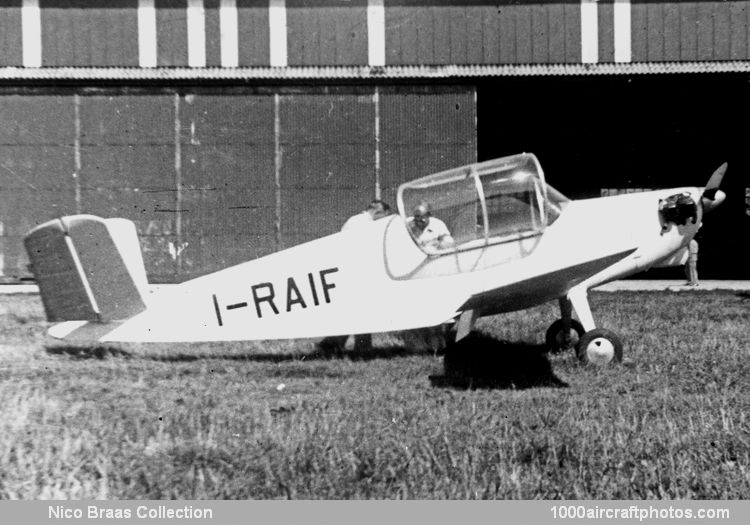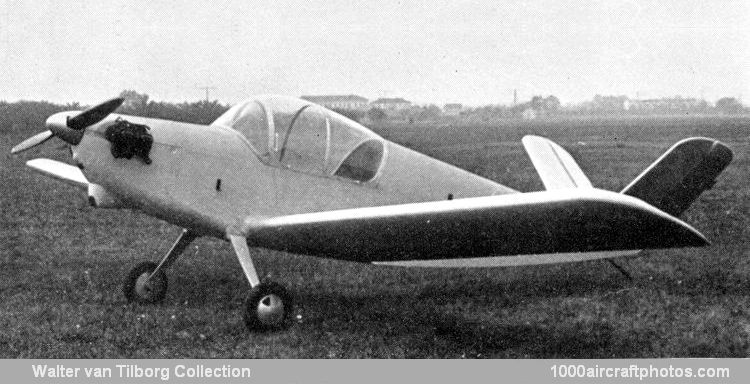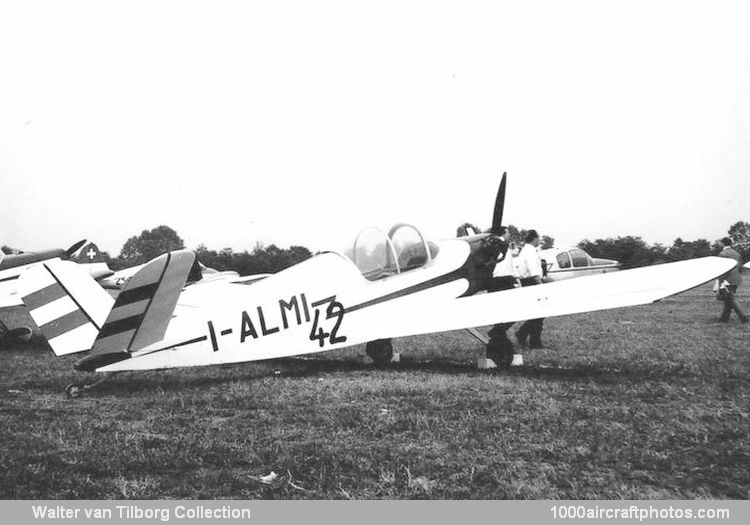Photographed ca. 1953, source unknown
02/28/2023. Remarks by
Johan Visschedijk: "The Gruppo Costruzioni Aeronautiche (G.C.A., Aeronautical Construction Group) was a group of aircraft enthusiasts who were building aircraft of their own design. The best designer among them was said to be Dr. Ing. Emilio Bianchi, who had designed three aircraft, the G.C.A.1 Pedro, G.C.A.2 Dumbo, and the G.C.A.3 Eta Beta, the latter two in cooperation with Giovanni Buzzucchi. The principal parts and components of the aircraft were produced by aviation related institutes in , including the Centro Volo a Vela (CVV, Experimental Soaring Centre) of the Polytechnic of Milan.
(I-RAIF) (
Walter van Tilborg Memorial Collection)
The G.C.A.3 Eta Beta was a scaled-up two-seat version of the single-seat G.C.A.2 Dumbo. Registered I-RAIF the one-of-a-kind was first flown in 1952.
(I-ALMI) (
Walter van Tilborg Memorial Collection)
The G.C.A.3 Eta Beta was later reregistered I-ALMI, it remained active well into the late-1960s.
Type: Two-seat touring or training monoplane.
Wings: Low-wing cantilever monoplane. NACA 23015 wing section. All-wood monospar wing with stressed plywood skin. Wings attached at roots to steel tube center section incorporated in fuselage structure. Flaps inboard of ailerons.
Fuselage: All-wood stressed-skin structure.
Tail unit: 'Butterfly' or V-type. All-wood framework, fixed surfaces plywood-covered and movable surfaces fabric-covered.
Landing gear: Fixed type. Cantilever spring steel main legs. Mechanical wheel brakes. Tail skid.
Power plant: A 60 hp Compagnia Nazionale Aeronautica D.4S four-cylinder horizontally-opposed air-cooled engine. Two-blade fixed-pitch airscrew.
Accommodation: Enclosed cabin seating two in tandem with dual controls. HF radio equipment."



